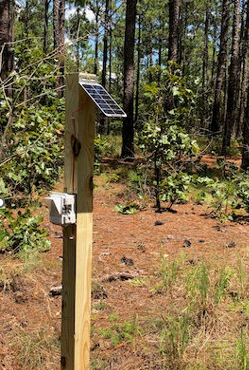The Tech That Makes Public Transport Feel Personal
There’s something undeniably poetic about public transport. The hum of the engine, the mosaic of strangers sharing a moment in time, and the quiet choreography of stops, starts, and swipes. But let’s be honest, there’s also something impersonal about it. You wait. You guess. You get frustrated when the bus is full or disappears from the app map like a ghost in the system.
What if public transport didn’t feel like a gamble?
What if it knew you? Spoke your language? Told you when it was safe to walk or wait? What if it understood your morning routine just like your favorite playlist or grocery delivery app?
That’s not a pipe dream anymore. Across cities and countries, the humble bus stop and train platform are getting a smart, human upgrade. And no, it’s not just about faster Wi-Fi or prettier maps. It’s about making public transport feel personal, like it was designed with you in mind.

TransitBot – Smart App for your bus updates
Your Multilingual Transit Concierge: Chatbots That Plan Your Trip
We’ve all been there—standing at a bus stop, squinting at a schedule that might as well be in Klingon. Or worse, trying to ask for directions when you don’t speak the local language.
Enter the transit chatbot. Think of it like ChatGPT for your commute—a friendly AI that doesn’t just spit out generic routes but actually understands what you need.
How it works:
- Type (or speak) a question like, “How do I get to the museum district by 10 AM?”
- The bot checks real-time schedules, delays, and even crowd levels.
- It responds in your preferred language, accounting for walking time, accessibility needs, or even coffee stops along the way.
Cities like Seoul and Helsinki already use these bots to help tourists and locals alike. No more guessing, no more missed transfers. Just a clear, personalized plan.
For non-native speakers, seniors, or anyone who’s ever felt overwhelmed by public transit, it’s a quiet revolution. Like having a local friend whisper the best route in your ear, it turns chaos into clarity—and stress into confidence.
“How Many People Are Waiting?” Apps That Help Buses Adapt
Ever sprinted to a bus stop only to watch the driver zoom past because the bus was packed? Or worse, been crammed into a sweaty, standing-room-only ride while three nearly empty buses trail behind?
That’s not just bad luck—it’s bad data. Traditionally, transit operators made decisions based on fixed schedules and outdated assumptions. Now, smart apps are giving drivers real-time insights on waiting passengers.
How it works:
- Sensors at stops count how many people are waiting.
- GPS tracks how crowded each bus or train is.
- Drivers—or even the buses themselves—adjust routes on the fly, sending extra vehicles to busy stops or skipping near-empty ones.
In cities like Singapore and London, this tech is already making rides smoother and more predictable. No more guessing games—just buses that show up when and where they’re needed.
Why it matters: This isn’t just about convenience; it’s about dignity. No one should have to choose between being late or squeezed like a sardine.

Smart Bus
Safety Alerts That Find You (Before Trouble Does)
Public transit safety isn’t just about preventing crime—it’s also about knowing when your train is delayed, if there’s construction ahead, or if a storm is about to derail your commute.
But most alerts are useless if they’re buried on a city’s Twitter page or announced after you’re already en route. Personalized safety tech is changing that game.
Here’s how it works:
- Apps use your location to send hyper-relevant alerts (like, “Your usual train is canceled—take the 8:15 instead”).
- AI predicts delays before they even happen by analyzing traffic, weather, and system history.
- Emergency alerts (like power outages or station closures) ping your phone instantly.
In Tokyo, some systems even use AR arrows on your phone to guide evacuees to safety.
It’s the difference between “Why is everyone leaving?” and “Here’s the safest, fastest way to reroute.”
The Bigger Picture: Transit That Feels Human
All these innovations have one thing in common: they treat riders like people, not numbers.
That’s a radical shift. For decades, transit was designed around efficiency—not empathy. But now, AI and real-time data are bridging the gap, making transportation systems smarter and more human.
Sure, there are challenges. Not every city can afford fancy upgrades. Privacy concerns around data tracking are valid. And let’s be real—no app can save a broken-down bus line with no funding.
But that’s where real change begins—with small, smart solutions that make people feel seen and served.
Want to See This Tech in Action? Try Our Transit Bot Demo
Think this all sounds like sci-fi? Try it yourself.
At our upcoming Symposium on Smart Transit Tech, you can test-drive a Transit Bot that works like ChatGPT—but for your commute.
Ask it things like:
- “What’s the cheapest way to get to the airport?”
- “Is the 7:30 PM train usually crowded?”
- “Can I bring my bike on the next bus?”
It doesn’t just recite schedules—it thinks. It adapts. And it might just make your next trip the smoothest one you’ve ever had.
At our Symposium, you’ll:
- Play with the Transit Bot
- Explore live crowd-prediction maps
- Talk with real engineers and city planners building this tech
It’s your chance to see what public transport looks like when it’s personal, proactive, and truly people-first.
Reserve your spot now before the next wave of innovation leaves the station.
References
- Transport for London (TfL). (2017). Mayor launches plan to improve air quality on the Tube.
https://tfl.gov.uk/info-for/media/press-releases/2017/june/mayor-launches-plan-to-improve-air-quality-on-the-tube - Transport for London (TfL). (2018). TfL to trial automatic passenger counting on buses.
https://tfl.gov.uk/info-for/media/press-releases/2018/june/tfl-to-trial-automatic-passenger-counting-on-buses - Seoul Metropolitan Government. (2023). Seoul’s AI Chatbot “Seoul Hi”.
https://english.seoul.go.kr/seoul-hi-ai-chatbot/ - Reuters. (2018). Helsinki’s Whim App Offers Transport as a Service.
https://www.reuters.com/article/us-helsinki-transportation-idUSKBN1F62GO - Land Transport Authority (LTA), Singapore. (2022). Singapore’s Smart Public Transport System.
https://www.lta.gov.sg/content/ltagov/en/industry_innovations/technologies/smart-public-transport.html - Nikkei Asia. (2021). Tokyo Tests AR for Disaster Evacuation Guidance.
https://asia.nikkei.com/Business/Technology/Tokyo-tests-AR-for-disaster-evacuation-guidance - Transit App. (2023). How Real-Time Alerts Work.
https://transitapp.com/blog/real-time-alerts - Smart Cities Dive. (2022). How Smart Buses Are Changing Urban Mobility.
https://www.smartcitiesdive.com/news/how-smart-buses-are-changing-urban-mobility/622456/ - National Institute for Transportation and Communities (NITC). (2021). Mobile Air Quality Sensing with Transit Vehicles.
https://nitc.trec.pdx.edu/research/project/1320/Mobile_Air_Quality_Sensing_with_Transit_Vehicles - World Bank Group. (2022). The Role of Public Transit in Closing the Digital Divide.
https://www.worldbank.org/en/news/feature/2022/03/15/the-role-of-public-transit-in-closing-the-digital-divide - Smart Cities Council. (2023). Smart Bus Stops: The Future of Urban Infrastructure.
https://smartcitiescouncil.com/article/smart-bus-stops-future-urban-infrastructure


![Bus Stop [Frepik https://www.freepik.com/]](https://varidx.io/wp-content/uploads/2025/03/82645369_9844304-150x150.jpg)
![Bus Stop [Frepik https://www.freepik.com/]](https://varidx.io/wp-content/uploads/2025/03/82645369_9844304-600x400.jpg)
